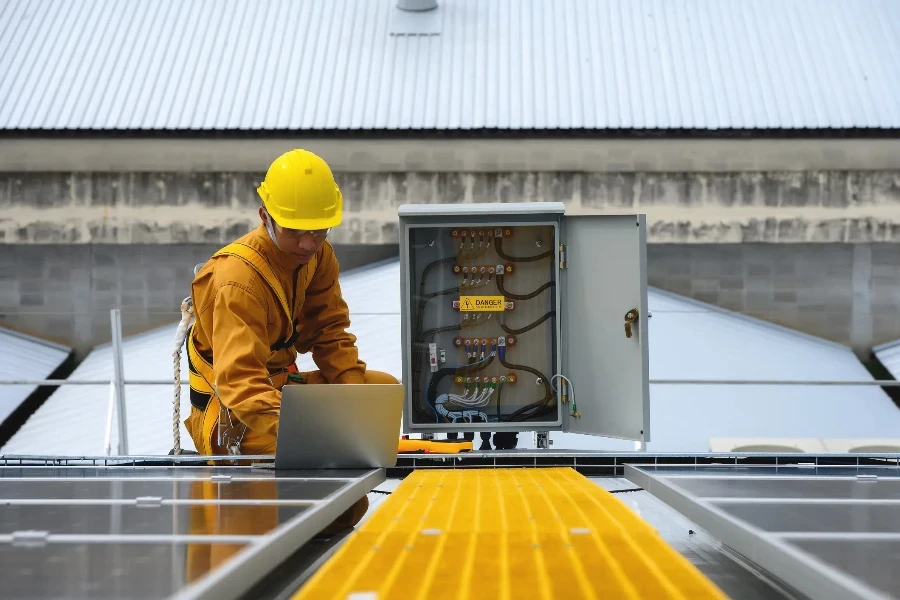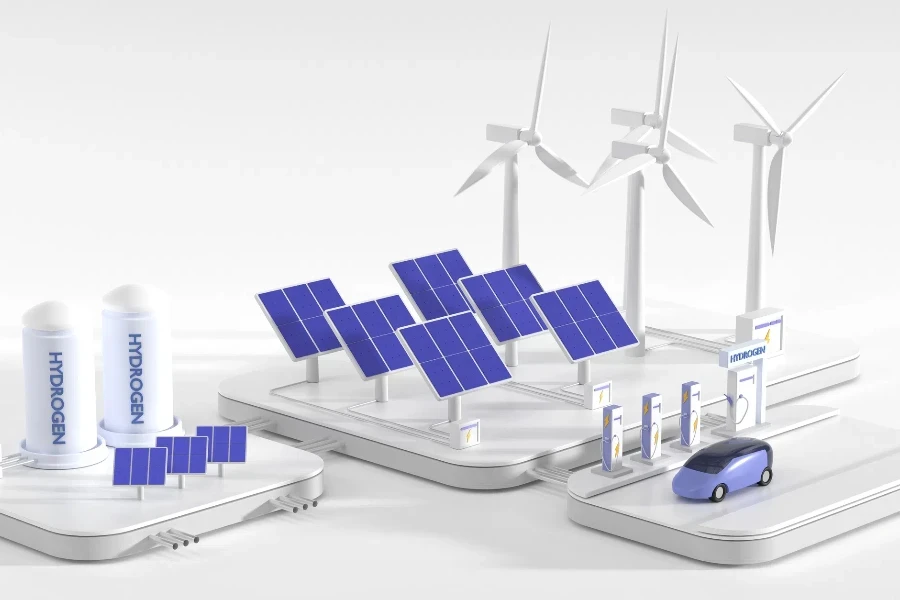The realm of renewable energy is vast and complex, yet at its core lies a simple and elegant solution: photovoltaic (PV) technology. This innovative approach to harnessing the sun’s power has revolutionized the way we think about and utilize energy. In this article, we’ll explore the intricacies of photovoltaic systems, shedding light on why they’re a cornerstone of sustainable energy solutions. From understanding the basics to exploring advanced applications, we’ll navigate through the key aspects that users care most about, providing you with a comprehensive understanding of photovoltaic technology.
Table of Contents:
– What is photovoltaic technology?
– How do photovoltaic systems work?
– The benefits of using photovoltaic energy
– Current trends in photovoltaic technology
– Future outlook of photovoltaic technology
What is photovoltaic technology?

Photovoltaic technology, at its essence, is a method of converting sunlight into electricity. This process, known as the photovoltaic effect, is achieved using solar cells, which are the building blocks of solar panels. Understanding the science behind photovoltaics is crucial for appreciating its potential. These solar cells are made from materials like silicon, which can absorb photons from sunlight and release electrons, creating an electric current.
The history of photovoltaic technology dates back to the 19th century, but it wasn’t until the space race that it found its first practical applications. Today, advancements in materials science and manufacturing techniques have made photovoltaics more efficient and affordable than ever. This evolution is a testament to the technology’s growing role in our energy landscape.
The versatility of photovoltaic systems means they can be deployed in a variety of settings, from residential rooftops to large-scale solar farms. This adaptability, combined with the declining cost of solar panels, has led to a surge in photovoltaic installations worldwide.
How do photovoltaic systems work?

At the heart of every photovoltaic system is the solar panel, a collection of solar cells designed to capture sunlight and convert it into electricity. But the journey from sunlight to usable power involves several steps and components. The generated direct current (DC) electricity needs to be converted into alternating current (AC), the form of electricity used by most home appliances. This conversion is made possible by an essential device known as an inverter.
The efficiency of a photovoltaic system is influenced by numerous factors, including the type of solar cells, the angle and orientation of the panels, and the presence of any shading. System design and installation play critical roles in maximizing energy production.
Energy storage is another crucial aspect of photovoltaic systems, allowing for the use of solar power even when the sun isn’t shining. Batteries store excess energy produced during the day, providing a reliable power supply through the night or during cloudy weather, enhancing the system’s overall efficiency and reliability.
The benefits of using photovoltaic energy

Photovoltaic energy offers several compelling advantages over traditional fossil fuels. Perhaps most notably, it’s a clean and renewable source of power. By converting sunlight into electricity, photovoltaic systems produce energy without emitting greenhouse gases or pollutants, contributing to a healthier environment and mitigating the impacts of climate change.
Economically, the initial investment in a photovoltaic system can be offset by the significant savings on electricity bills over time. Government incentives and decreasing costs of solar technology further improve the financial viability of photovoltaic installations for individuals and businesses alike.
Moreover, the scalability of photovoltaic systems means they can be tailored to meet specific energy needs, whether for a single household or an entire community. This flexibility, combined with the potential for energy independence, makes photovoltaic technology an attractive option for a wide range of applications.
Current trends in photovoltaic technology

The photovoltaic industry is characterized by rapid innovation and growth. Recent trends include the development of more efficient solar cells, such as perovskite cells, which promise higher efficiencies at lower costs. Bifacial solar panels, which capture sunlight from both sides, are another advancement enhancing energy yield.
Integration with smart technology is also on the rise, allowing for more sophisticated energy management and optimization. Smart photovoltaic systems can adjust to changing weather conditions and energy demands, improving performance and maximizing savings.
On a larger scale, the deployment of floating photovoltaic systems on bodies of water is emerging as a novel solution to land constraints, opening new avenues for solar energy production.
Future outlook of photovoltaic technology

The future of photovoltaic technology is bright, with ongoing research and development paving the way for even more efficient and sustainable solutions. Innovations in materials science and engineering hold the promise of overcoming current limitations, potentially revolutionizing how we harness and utilize solar energy.
As global awareness and commitment to renewable energy grow, photovoltaic technology will undoubtedly play a pivotal role in shaping our energy future. The continued decline in costs, coupled with technological advancements, will further democratize access to clean energy, making it a cornerstone of global efforts to achieve a sustainable and resilient energy system.
Conclusion:
Photovoltaic technology stands at the forefront of the renewable energy revolution, offering a clean, versatile, and sustainable solution to our growing energy needs. As we’ve explored, from the basics of how photovoltaic systems work to the exciting trends shaping their future, it’s clear that the potential of this technology is vast and largely untapped. Embracing photovoltaic energy not only benefits the environment but also offers economic advantages and the promise of a more sustainable future. As innovation continues to drive the industry forward, the role of photovoltaic technology in our energy landscape is set to become even more significant.




